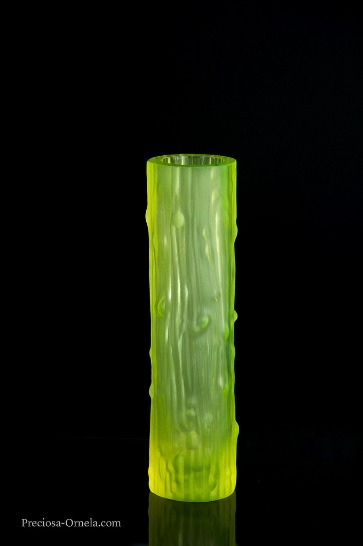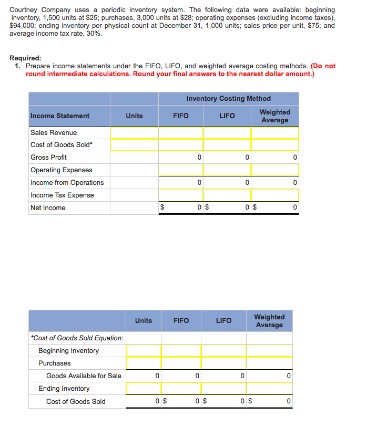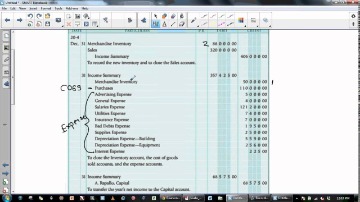Content
- Choosing A Periodic Or Perpetual Inventory System
- Methods Under A Periodic Inventory System
- Periodic Inventory Faqs
- Company
A perpetual system tracks every transaction as it happens, including purchases and sales. The system also tracks all information pertinent to the product, such as its physical dimensions and its storage location. Here, we’ll briefly discuss these additional closing entries and adjustments as they relate to the perpetual inventory system.
- An additional entry that is related to the periodic inventory system, but which does not directly impact inventory, is the sale transaction.
- At the end of the accounting period, the final inventory balance and COGS is determined through a physical inventory count.
- In a periodic inventory system, you update the inventory balance once a period.
- Understanding the difference between the two systems can help you figure out which method works best for your business.
- Under periodic inventory systems, a temporary account, Purchase Returns and Allowances, is updated.
Since physical inventory counts are time-consuming, few companies do them more than once a quarter or year. In the meantime, the inventory account in the accounting system continues to show the cost of the inventory that was recorded as of the last physical inventory count. To implement a periodic inventory accounting system, all you need is a team to perform the physical inventory count and an accounting method for determining the cost of closing inventory. The LIFO (last-in first-out), FIFO (first-in first-out), and the inventory weighted average methods are all promising calculation techniques. The perpetual inventory system gives real-time updates and keeps a constant flow of inventory information available for decision-makers. With advancements in point-of-sale technologies, inventory is updated automatically and transferred into the company’s accounting system.
Choosing A Periodic Or Perpetual Inventory System
An alternate system is considered below, called the periodic inventory system. There are some key differences between perpetual and periodic inventory systems. When a company uses the perpetual inventory system and makes a purchase, they will automatically update the Merchandise Inventory account. Under a periodic inventory system, Purchases will be updated, while Merchandise Inventory will remain unchanged until the company counts and verifies its inventory balance. This count and verification typically occur at the end of the annual accounting period, which is often on December 31 of the year. The Merchandise Inventory account balance is reported on the balance sheet while the Purchases account is reported on the Income Statement when using the periodic inventory method. The Cost of Goods Sold is reported on the Income Statement under the perpetual inventory method.The accountant removes the balance to another account at the end of the year. An additional entry that is related to the periodic inventory system, but which does not directly impact inventory, is the sale transaction. The following entry shows the transaction that you record under a periodic inventory system when you sell goods. There is not a corresponding and immediate decline in the inventory balance at the same time, because the periodic inventory system only adjusts the inventory balance at the end of the accounting period. Thus, there is not a direct linkage between sales and inventory in a periodic inventory system.
Methods Under A Periodic Inventory System
See the same activities from the FIFO and LIFO cards above in the weighted average card below. In a periodic inventory system, you update the inventory balance once a period. You can assume that both the sales and the purchases are on credit and that you are using the gross profit to record discounts. The good news for you is the inventory valuation methods under FIFO, LIFO, weighted average , and specific identification are calculated basically the same under the periodic and perpetual inventory systems! The bad news is the periodic method does do things just a little differently. The periodic system uses an occasional physical count to measure the level of inventory and the cost of goods sold . The inventory account and the cost of goods sold account are updated at the end of a set period—this could be once a month, once a quarter, or once a year.

In contrast, the perpetual inventory system is a method that continuously monitors a business’s inventory balance by automatically updating inventory records after each sale or purchase. Between the two accounting systems, there are differences in how you update the accounts and which accounts you need.
Periodic Inventory Faqs
While the periodic method is acceptable for companies that have minimal inventory items or small businesses, those companies that plan to scale will need to implement a perpetual inventory system. Regardless of the type of inventory control process you choose, decision makers need the right tools in place so they can manage their inventory effectively.There are more chances for shrinkage, damaged, or obsolete merchandise because inventory is not constantly monitored. Since there is no constant monitoring, it may be more difficult to make in-the-moment business decisions about inventory needs. Although this method requires one less entry, the cost of goods sold is not specifically determined. Once the ending inventory and cost of goods sold are clarified, the accounts require adjustment to reflect the ending inventory balance and the cost of goods sold. The total of the beginning inventory and purchases during the period represents all goods that the firm had available for sale. After subtracting the ending inventory from this total, the remaining balance represents the cost of the items sold.

However, the sheer volume of transactions in some merchandising businesses makes it impossible to use anything but the periodic system. The example below has the same activities as above, except the company tracks each unit individually and what it purchased.Instead, cost of goods sold is calculated at the end of the accounting period. For the periodic inventory method, there’s no need to continually record the inventory levels.
Company
Any business can use a periodic system since there’s no need for additional equipment or coding to operate it, and therefore it costs less to implement and maintain. Further, you can train staff to provide simple inventory counts when time is limited or you have high staff turnover. They can quickly count the goods they are working with, whereas a perpetual system, which provides a more accurate inventory, requires training staff on electronic scanners and data entry. Learn more about a perpetual system and how it gives a more precise inventory solution by reading our “Guide to Perpetual Inventory”. Businesses with high sales volume and multiple retail outlets need perpetual inventory systems. The technological aspect of the perpetual inventory system has many advantages such as the ability to more easily identify inventory-related errors.

Then, it performs a detailed physical inventory, reporting back each unit sold by the date the purchase was made. In a periodic system, you enter transactions into the accounting journal. This journal shows your company’s debits and credits in a simple column form, organized by date.Any adjustments related to these purchases of goods will be credited to a general ledger contra account such as Purchases Discounts or Purchases Returns and Allowances. When the balances of these three purchases accounts are combined, the resulting amount is known as net purchases. For example, XYZ Corporation has a beginning inventory of $100,000, has $120,000 in outgoings for purchases and its physical inventory count shows a closing inventory cost of $80,000. The yearly inventory purchases are recorded in the purchases account, which is a ledger listing all inventory purchases and their costs.
How do you calculate cost of goods sold under FIFO?
To calculate COGS (Cost of Goods Sold) using the FIFO method, determine the cost of your oldest inventory. Multiply that cost by the amount of inventory sold. Please note: If the price paid for the inventory fluctuates during the specific time period you are calculating COGS for, that must be taken into account too.By contrast, the perpetual system keeps track of inventory balances continuously, with updates made automatically whenever a product is received or sold. As long as there is no theft or damage, the inventory account balance should be accurate. The cost of goods sold account is also updated continuously as each sale is made.While the system may work for smaller businesses, it can prove to be highly problematic for large businesses due to its high level of inaccuracy. Since the periodic system is manual, it’s prone to human error and the inventory data can be misplaced or lost. Since the periodic system involves fewer records and simpler calculation than the perpetual system, it is easier to implement. The simplicity also allows for the use of manual record keeping for small inventories. Under the perpetual system, managers are able to make the appropriate timing of purchases with a clear knowledge of the quantity of goods on hand at various locations.Periodic inventory accounting systems are normally better suited to small businesses, while businesses with high sales volume and multiple retail outlets need perpetual inventory systems. A periodic inventory system is a method of inventory valuation where the account is periodically updated. In other words, the factor that determines changes to recorded inventory balance is not triggered by each new order but rather an overall time period. When a sales return occurs, perpetual inventory systems require recognition of the inventory’s condition. Under periodic inventory systems, only the sales return is recognized, but not the inventory condition entry.This allows managers to make decisions as it relates to inventory purchases, stocking, and sales. The information can be more robust, with exact purchase costs, sales prices, and dates known. Although a periodic physical count of inventory is still required, a perpetual inventory system may reduce the number of times physical counts are needed. A periodic inventory system measures the inventory levels periodically through physical counts. The perpetual method continuously updates inventory records after each sale or purchase, monitoring the inventory balance. Small business owners with less inventory benefit more from periodic systems than larger merchants. The biggest disadvantages of using the perpetual inventory systems arise from the resource constraints for cost and time.Then, at the end of an accounting period, take a physical count of each item. There are advantages and disadvantages to both the perpetual and periodic inventory systems. If your business is small, using periodic inventory management may work for you because you can operate with just a cash register and simple accounting procedures.